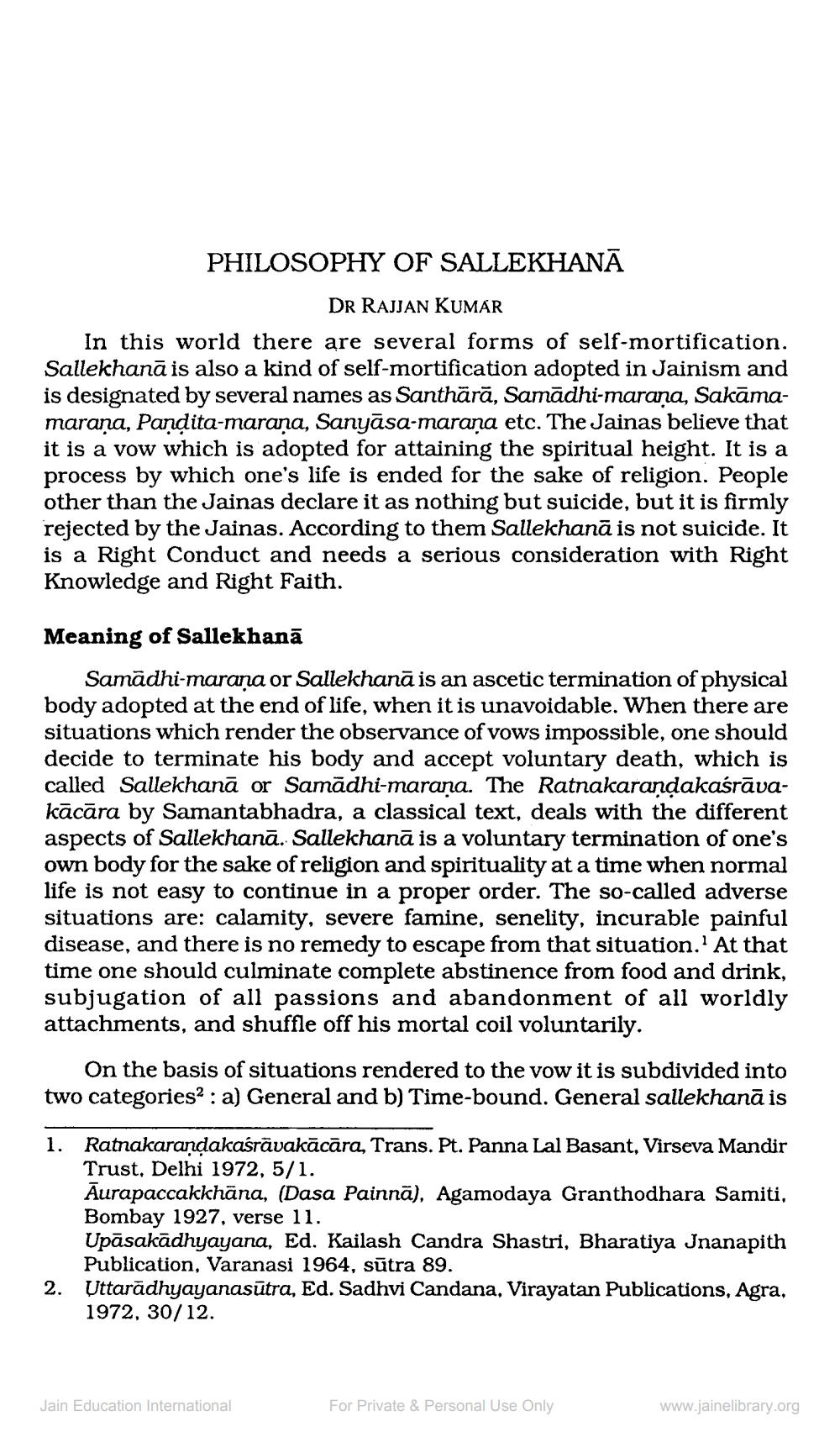________________
PHILOSOPHY OF SALLEKHANĀ
DR RAJJAN KUMAR
In this world there are several forms of self-mortification. Sallekhanā is also a kind of self-mortification adopted in Jainism and is designated by several names as Santhārā, Samādhi-maraṇa, Sakāmamarana, Pandita-marana, Sanyāsa-maraṇa etc. The Jainas believe that it is a vow which is adopted for attaining the spiritual height. It is a process by which one's life is ended for the sake of religion. People other than the Jainas declare it as nothing but suicide, but it is firmly rejected by the Jainas. According to them Sallekhanā is not suicide. It is a Right Conduct and needs a serious consideration with Right Knowledge and Right Faith.
Meaning of Sallekhanā
Samadhi-marana or Sallekhanā is an ascetic termination of physical body adopted at the end of life, when it is unavoidable. When there are situations which render the observance of vows impossible, one should decide to terminate his body and accept voluntary death, which is called Sallekhanā or Samadhi-marana. The Ratnakaranḍakaśrāvakācāra by Samantabhadra, a classical text, deals with the different aspects of Sallekhanā. Sallekhanā is a voluntary termination of one's own body for the sake of religion and spirituality at a time when normal life is not easy to continue in a proper order. The so-called adverse situations are: calamity, severe famine, senelity, incurable painful disease, and there is no remedy to escape from that situation.1 At that time one should culminate complete abstinence from food and drink, subjugation of all passions and abandonment of all worldly attachments, and shuffle off his mortal coil voluntarily.
On the basis of situations rendered to the vow it is subdivided into two categories2: a) General and b) Time-bound. General sallekhanā is
1. Ratnakaranḍakasrāvakācāra, Trans. Pt. Panna Lal Basant, Virseva Mandir Trust, Delhi 1972, 5/1.
Aurapaccakkhāna, (Dasa Painnā), Agamodaya Granthodhara Samiti, Bombay 1927, verse 11.
Upāsakādhyayana, Ed. Kailash Candra Shastri, Bharatiya Jnanapith Publication, Varanasi 1964, sūtra 89.
2. Uttaradhyayanasūtra, Ed. Sadhvi Candana, Virayatan Publications, Agra, 1972, 30/12.
Jain Education International
For Private & Personal Use Only
www.jainelibrary.org




